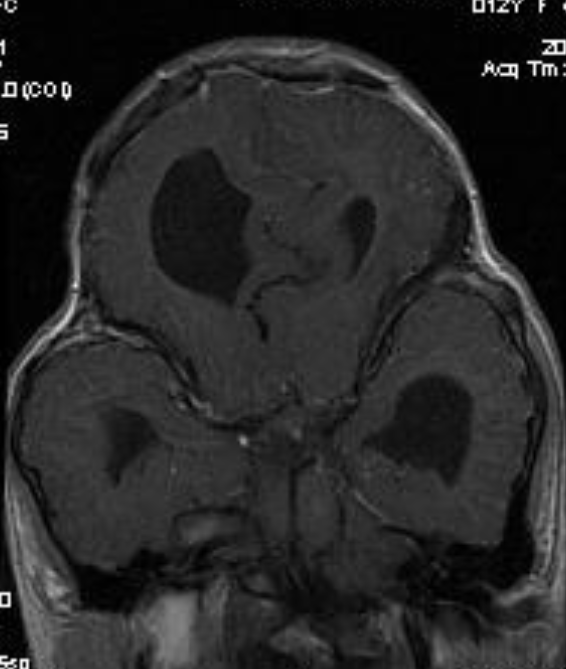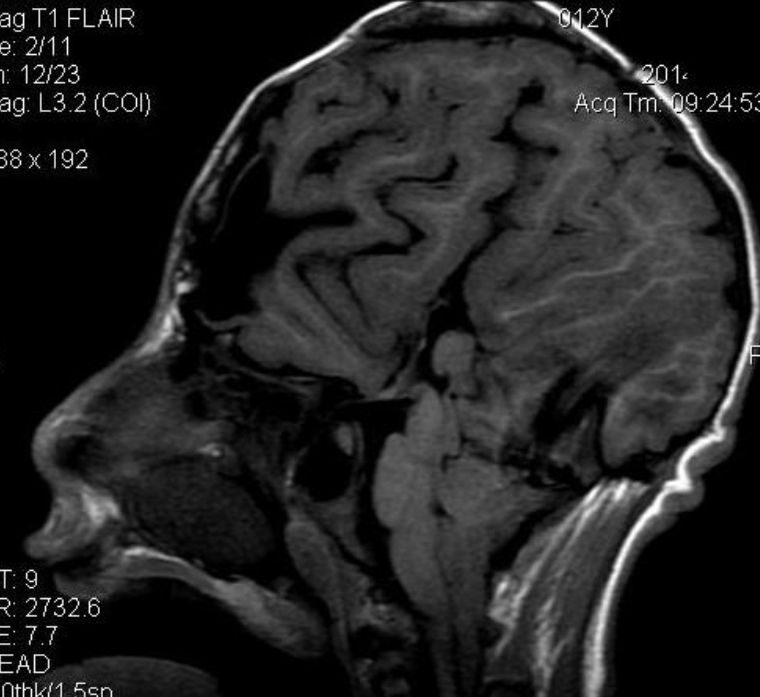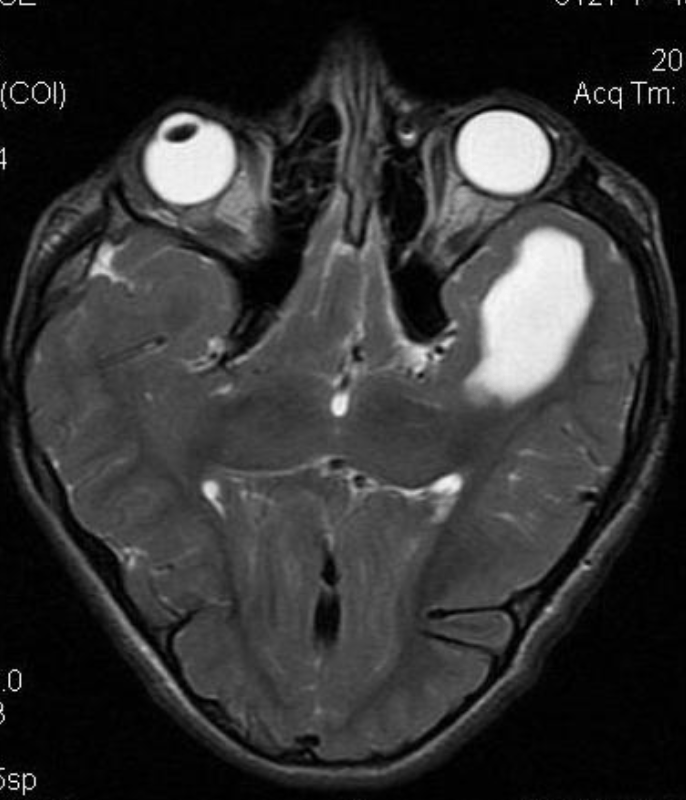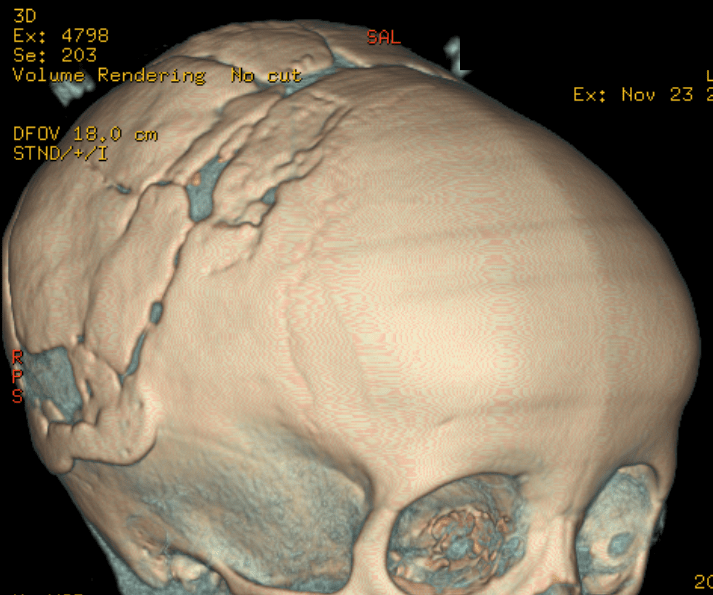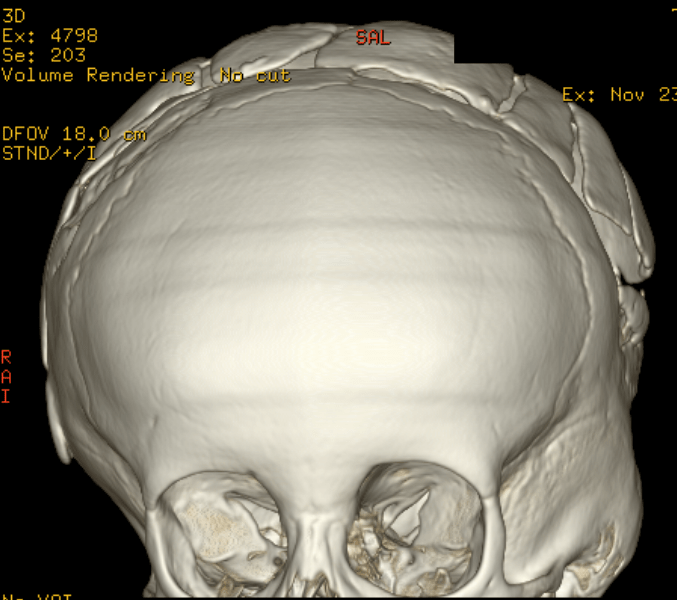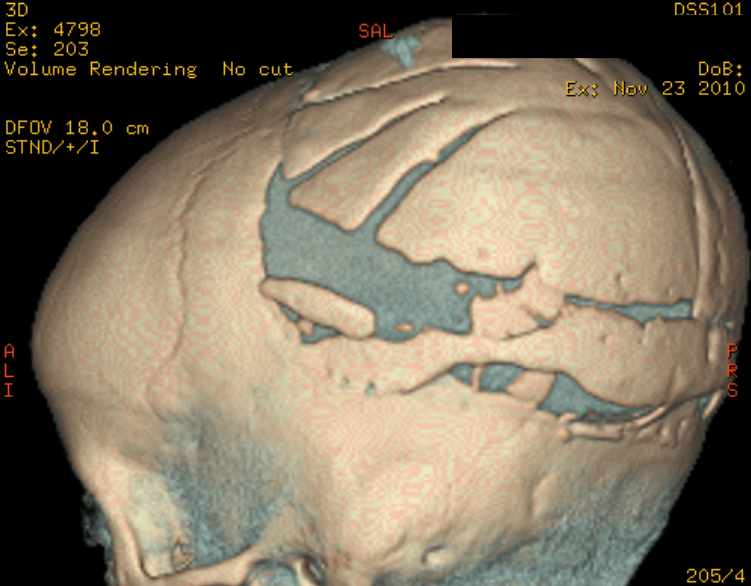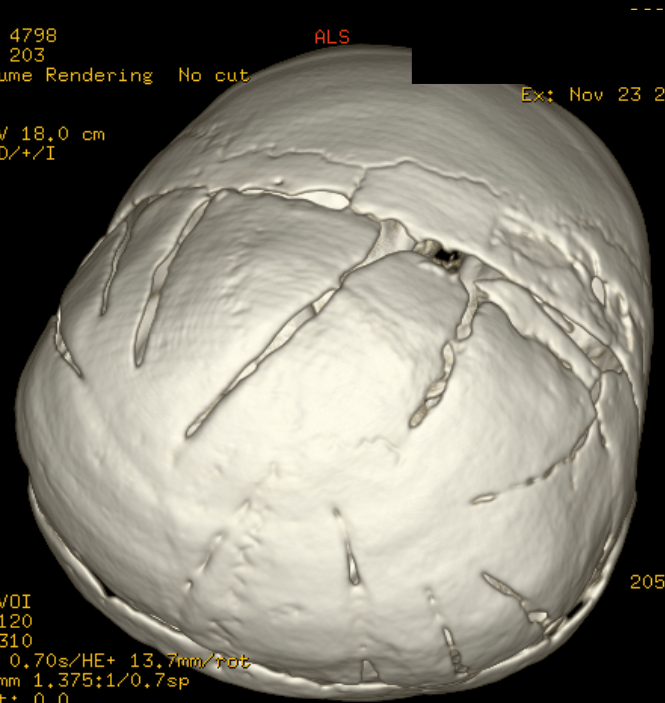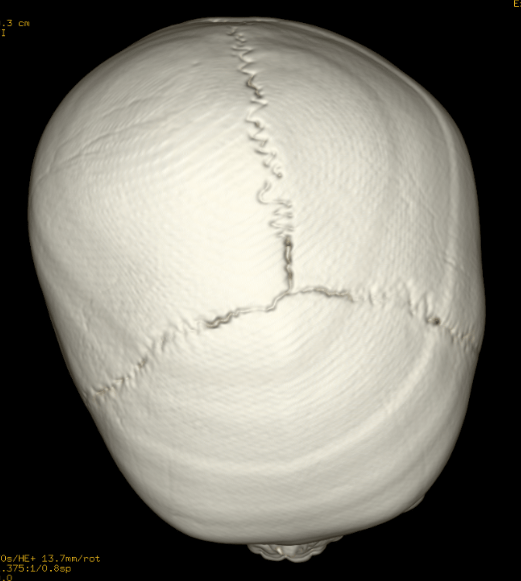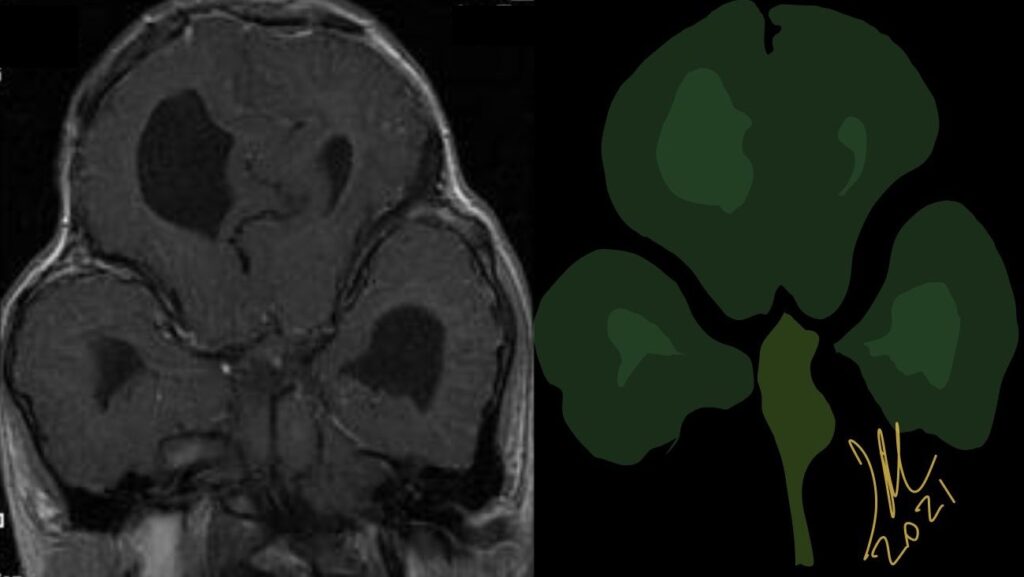
Pfeiffer syndrome is a form of pansynostosis of the cranial sutures with associated limb abnormalities. There are 3 types of Pfeiffer syndrome with type I (classic) being the mildest form of the disorder. Midface hypoplasia and abnormal skull shape are minimal in this form of the disease, and intelligence is more likely to be normal in these patients. Type II is more severe and results in the formation of a “cloverleaf” skull (our case), also known as kleeblattschädel, and the degree of cranial abnormality is more pronounced. Pfeiffer syndrome type II is commonly fatal in infancy due to its marked compression on the intracranial structures. Pfeiffer syndrome type III is also more severe than Pfeiffer syndrome type I; however, the cloverleaf skull phenotype is less common in Pfeiffer syndrome type III.
Pfeiffer syndrome type II is caused by a mutation in the gene for fibroblast growth factor receptor 2 (FGFR2) on the long arm of chromosome 10, a gene that encodes a cell membrane protein responsible for cell differentiation. Pfeiffer syndrome type I has an association with FGFR1, a different gene on the short arm of chromosome 8. Mutations in the FGFR genes are also implicated in Apert, Beare-Stevenson, Crouzon, Jackson-Weiss, and Muenke syndromes, all diseases that exhibit craniosynostosis and/or facial malformations to varying degrees. The pattern of inheritance for Pfeiffer syndrome is autosomal dominant with cases of Pfeiffer syndrome types II and III due primarily to sporadic de novo mutations.
The cloverleaf skull deformity (kleeblattschädel) was first described by Holtermuller and Wiedemann. The upper and lower leaves of the cloverleaf are formed by a ring of bone that divides the upper and lower leaves of the cloverleaf, and there is a honeycomb pattern of the inner vault of the skull. Crowding of the posterior fossa and subsequent hindbrain herniation are common. Kleeblattschädel can be seen in severe forms of Crouzon and Apert syndromes, Saethre-Chotzen syndrome, Carpenter syndrome, and thanatophoric dysplasia, though Pfeiffer syndrome has been reported to account for approximately 15%-20% of cases. Intellectual impairment observed in patients with cloverleaf skull is most likely a result of the intracranial mass effect from the calvarial deformity rather than an intrinsic brain abnormality, as normal intelligence by 4 years of age has been reported in some cases of patients undergoing a staged reconstruction of kleeblattschädel
